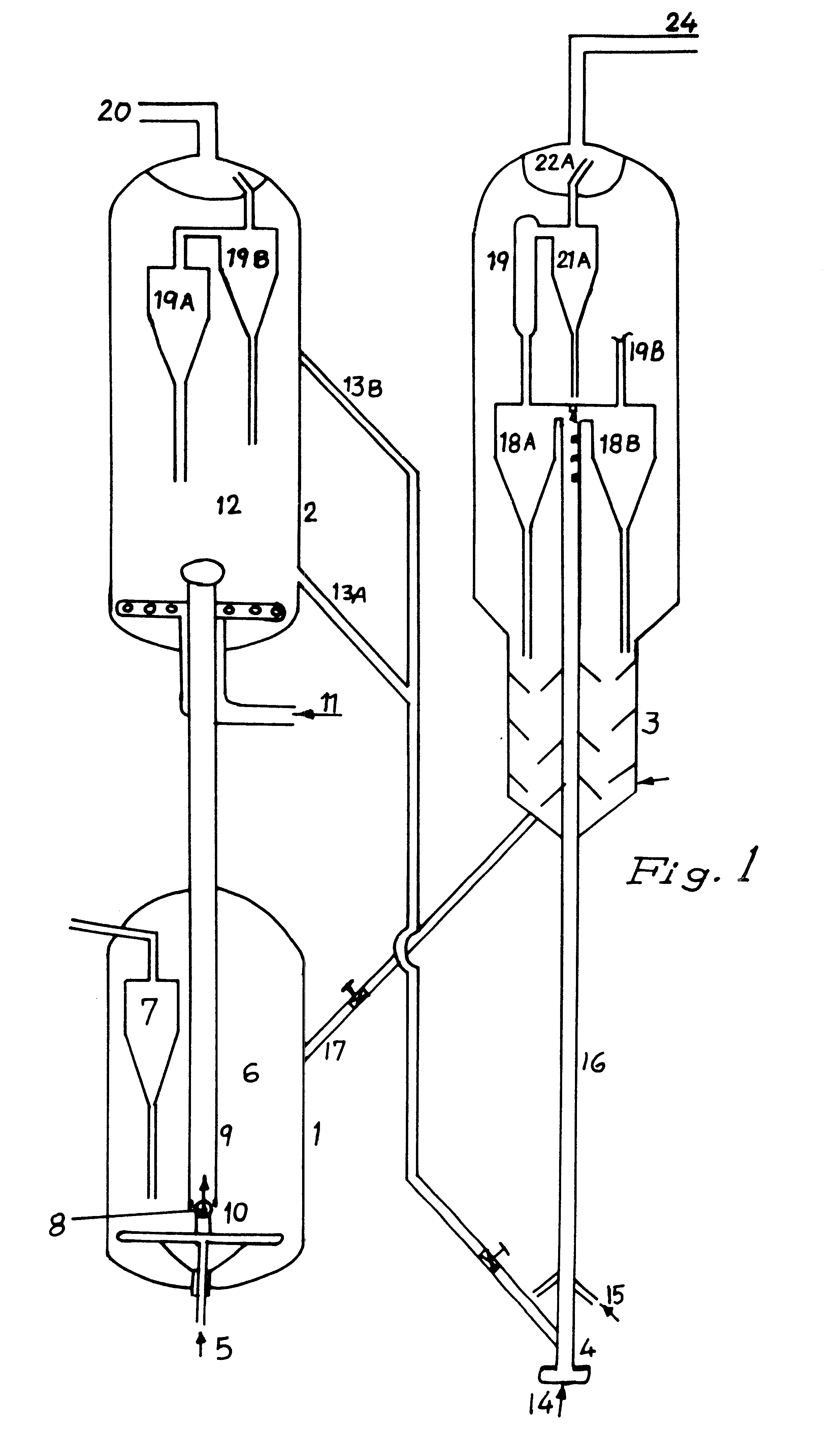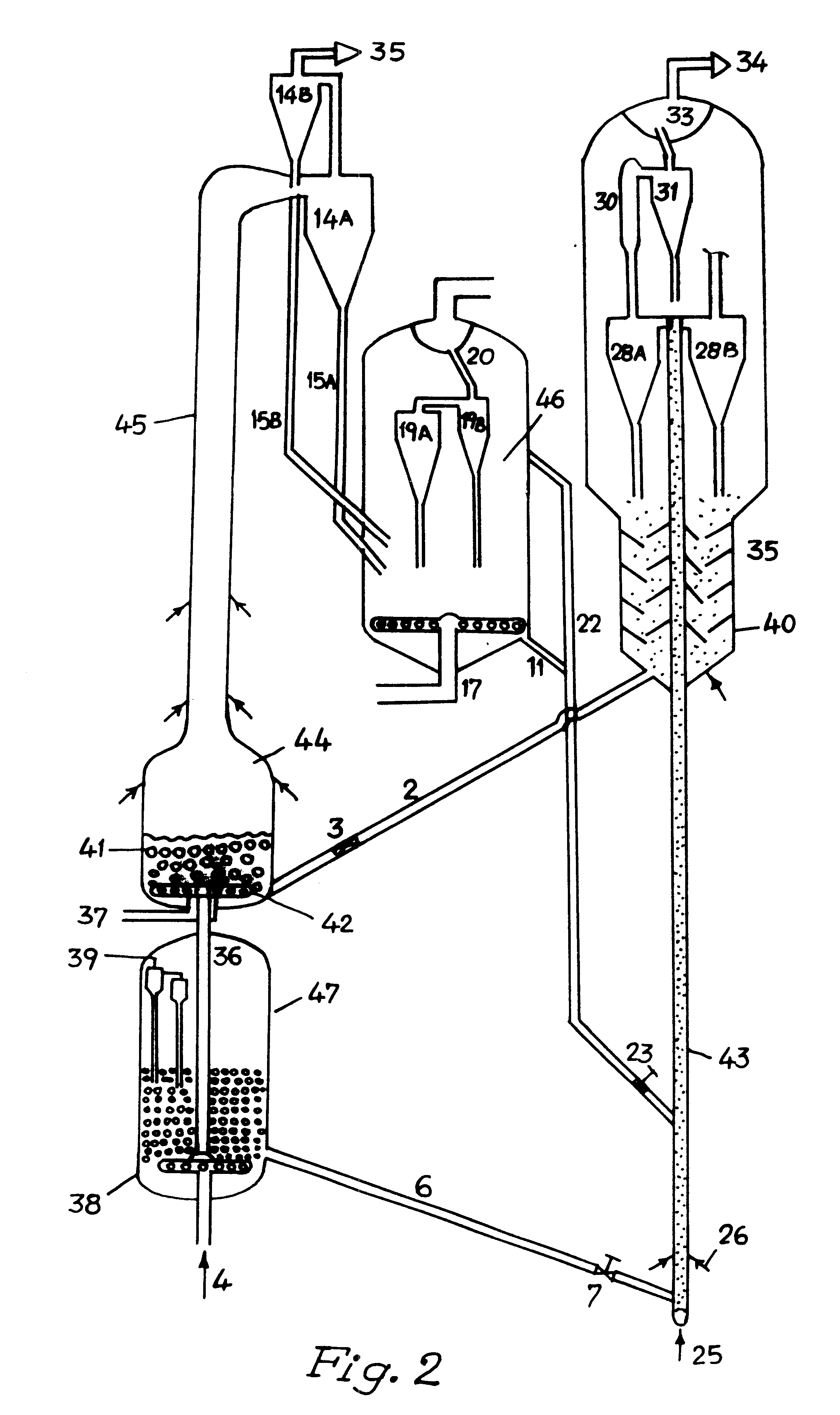Fluidized catalytic cracking process
a catalytic cracking and flue gas technology, applied in the field of flue gas catalytic cracking, can solve the problems of reducing the catalyst/oil ratio for heat balanced fcc unit, bringing down the activity and selectivity,
- Summary
- Abstract
- Description
- Claims
- Application Information
AI Technical Summary
Problems solved by technology
Method used
Image
Examples
example 1
This example illustrates the relationship of superficial bad velocity with the segregation efficiency of a dual solid system. A glass column with following design specification is used for the study.
Sand is used in the size range of 220-320 microns with particle density of 2600 kg / m.sup.3. Catalyst is in the size range of 40-50 microns with particle density of 1450 kg / m.sup.3. Typically 800 gms of 50 / 50 by wt of sand and catalyst mixture is loaded and air is injected at the bottom of the column at different velocities. Solid sample is collected near bottom of the column just above the air entry point. The particle size distribution of the collected solid is done to establish amount of segregation that has taken place. For 100% segregation, the collected sample should contain no particle of size below 200 micro i.e. the cut off size between sand and catalyst. Following results are obtained when the air velocity is increased for a mixture with starting inventory of 800 grams of sand / c...
example 2
This example illustrates the benefits of sequential dual solid processing particularly the vanadium deposition preferentially on the adsorbent particles and thereby improving the activity of the FCC catalyst.
For this purpose following samples were considered.
Catalyst A ReUSY earth exchanged ultra stable Y) based FCC catalyst sample (commercially available from M / s. AKZO Nobel, the Netherlands in trade name Vision 56M)
Adsorbent V-trap commercial additive from M / s. Intercat, USA. But with particle size in the range of 250-350 micron.
Vanadium is first deposited (by adopting pore volume impregnation route of Mitchell) at 0 and 1000 ppm on the mixture of catalyst A and adsorbent B mixed in the ratio of 10.0.6.
Typically, the MAT activity was determined using MAT (micro activity test) condition of 51 C. reactor temperature, 2.5 grams solid loading, 30 seconds feed injection time and varying feed rate to generate date at different conversion level. Feed use is the combined feed used in one ...
PUM
| Property | Measurement | Unit |
|---|---|---|
| particle density | aaaaa | aaaaa |
| particle size | aaaaa | aaaaa |
| particle density | aaaaa | aaaaa |
Abstract
Description
Claims
Application Information
 Login to View More
Login to View More - R&D
- Intellectual Property
- Life Sciences
- Materials
- Tech Scout
- Unparalleled Data Quality
- Higher Quality Content
- 60% Fewer Hallucinations
Browse by: Latest US Patents, China's latest patents, Technical Efficacy Thesaurus, Application Domain, Technology Topic, Popular Technical Reports.
© 2025 PatSnap. All rights reserved.Legal|Privacy policy|Modern Slavery Act Transparency Statement|Sitemap|About US| Contact US: help@patsnap.com



